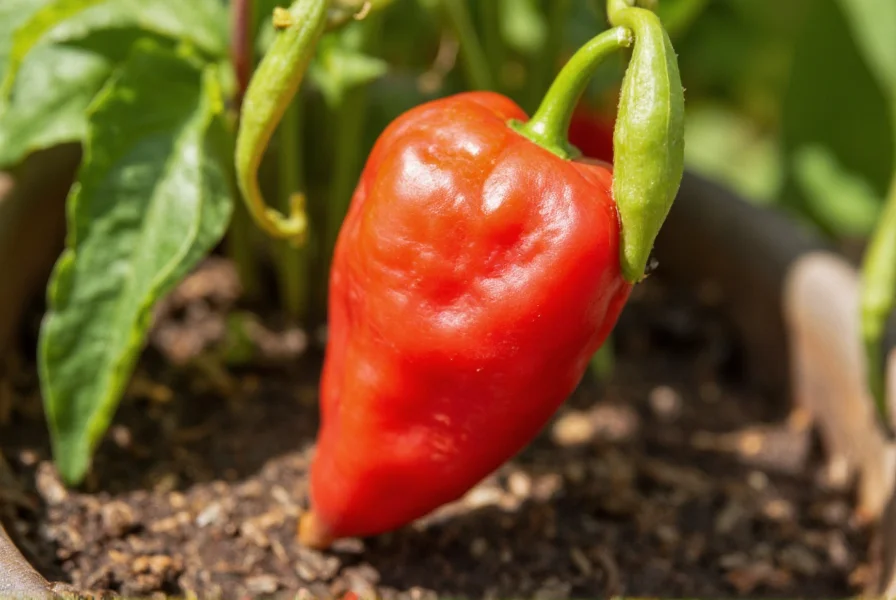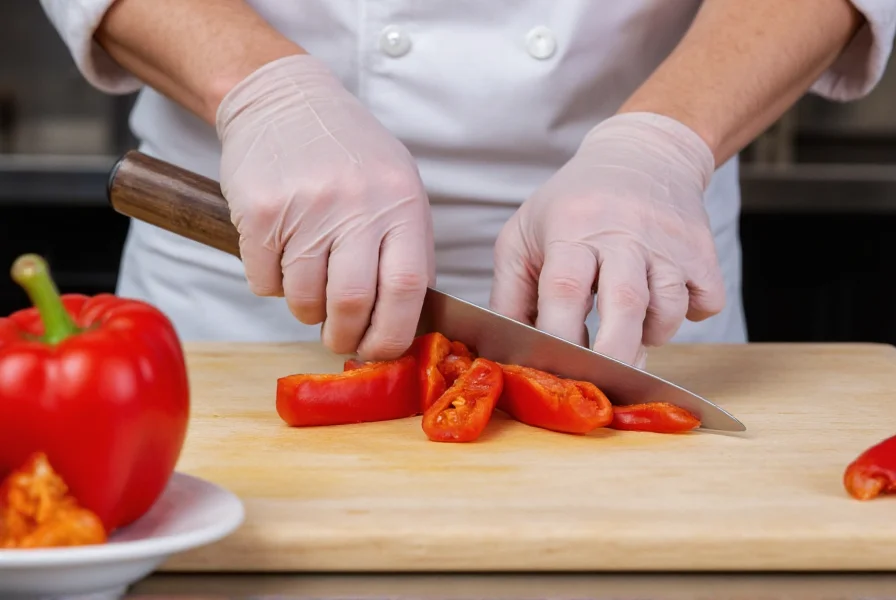Understanding Mad Pepper Characteristics
Mad pepper stands as one of the world's significantly hot chili varieties, though it doesn't reach the extreme levels of record-holding peppers like the Carolina Reaper. This Capsicum chinense hybrid delivers a distinctive flavor experience that begins with tropical fruit notes before escalating to intense heat. The mad pepper scoville rating places it firmly in the super-hot category, approximately 100 times hotter than a standard jalapeño.
Gardeners and chili enthusiasts often seek information about mad pepper growing conditions, which require warm temperatures, well-draining soil, and approximately 90-100 days to reach full maturity. The plants typically grow 2-3 feet tall and produce peppers that transition from green to vibrant red when fully ripe. Understanding proper mad pepper handling safety is crucial, as direct skin contact can cause severe irritation.

Heat Comparison and Measurement
When evaluating mad pepper heat level, it's essential to understand where it stands among other popular super-hots. The mad pepper vs carolina reaper comparison reveals significant differences in potency, with Carolina Reapers typically exceeding 1.5 million SHU, sometimes reaching over 2 million SHU.
| Pepper Variety | Scoville Heat Units | Relative Heat |
|---|---|---|
| Mad Pepper | 800,000-1,000,000 | Extremely Hot |
| Carolina Reaper | 1,400,000-2,200,000 | World's Hottest |
| Habanero | 100,000-350,000 | Very Hot |
| Jalapeño | 2,500-8,000 | Moderately Hot |
Flavor Profile Beyond the Heat
The mad pepper flavor profile offers more than just intense heat. Before the burning sensation takes over, consumers experience distinct tropical fruit notes reminiscent of apricot and citrus. This complex flavor makes mad pepper particularly valuable in culinary applications where depth matters, not just heat. Many hot sauce makers specifically seek mad pepper for its balanced flavor-heat ratio compared to other super-hots that may lack nuanced flavor.
Culinary Applications and Safety
When exploring mad pepper culinary uses, chefs typically employ this ingredient sparingly. The intense capsaicin concentration means even small amounts can transform a dish. Common applications include:
- Specialty hot sauces requiring both flavor complexity and significant heat
- Infused oils for controlled heat delivery
- Small quantities in meat rubs for barbecue enthusiasts
- Experimental cooking for heat-seeking foodies
Proper mad pepper handling safety cannot be overstated. Always wear gloves when processing these peppers, avoid touching your face, and work in well-ventilated areas. The capsaicin oils can become airborne during cutting, causing respiratory irritation. Never use blenders or food processors without proper ventilation, as this aerosolizes the capsaicin.

Growing Mad Pepper Successfully
For gardeners interested in where to buy mad pepper seeds, numerous specialty seed companies offer them, though they're less common than habanero or jalapeño varieties. Successful cultivation requires:
- Starting seeds indoors 8-10 weeks before last frost
- Maintaining soil temperature around 80-90°F (27-32°C) for germination
- Providing 6-8 hours of direct sunlight daily
- Using well-draining soil with pH between 6.0-6.8
- Consistent watering without waterlogging
Plants typically produce their first harvest 90-100 days after transplanting outdoors. The peppers transition from green to bright red as they mature, with full heat development occurring at complete ripeness. Many growers report that mad pepper plants yield approximately 25-35 peppers per healthy plant under optimal conditions.
Common Misconceptions
Several myths surround this super-hot variety. Contrary to popular belief, mad pepper isn't the world's hottest chili—that title belongs to newer cultivars like Pepper X or Carolina Reaper. Another misconception is that milk effectively neutralizes mad pepper burn; while dairy helps, it doesn't provide immediate relief from extreme capsaicin exposure. Understanding how hot is mad pepper realistically helps enthusiasts prepare properly rather than underestimating its potency.
Responsible Consumption Guidelines
Those experimenting with mad pepper should follow these safety protocols:
- Start with minuscule amounts (1/16 teaspoon or less)
- Have dairy products readily available (milk, yogurt)
- Avoid consuming on an empty stomach
- Don't challenge friends to eat it without proper preparation
- Wear gloves during preparation
- Keep children and pets away from processing areas
Responsible use ensures that the mad pepper experience remains enjoyable rather than dangerous. The question of is mad pepper dangerous has a straightforward answer: when handled properly, it's no more dangerous than other super-hots, but negligence can lead to serious discomfort or medical issues.
What is the exact Scoville rating of mad pepper?
Mad pepper typically measures between 800,000-1,000,000 Scoville Heat Units (SHU), placing it firmly in the super-hot category. This makes it approximately 100 times hotter than a standard jalapeño but significantly less hot than the Carolina Reaper, which often exceeds 1.5 million SHU.
How does mad pepper compare to ghost peppers?
Mad pepper is generally hotter than ghost peppers (Bhut Jolokia), which measure 800,000-1,041,000 SHU. While their heat ranges overlap at the lower end of mad pepper's spectrum, most mad pepper varieties consistently exceed the upper limits of ghost peppers. Mad pepper also tends to have a more complex flavor profile with stronger fruit notes compared to ghost peppers.
Can you grow mad pepper in containers?
Yes, mad pepper grows well in containers with proper care. Use a 5-gallon container with drainage holes, quality potting mix, and place in full sun. Container-grown plants require more frequent watering and feeding than garden-planted ones. Ensure the container receives 6-8 hours of direct sunlight daily and maintain consistent moisture without waterlogging the soil.
What should I do if mad pepper burns my skin?
If mad pepper causes skin irritation, immediately wash the affected area with soap and cool water. Apply milk, yogurt, or a specialized capsaicin removal product. Avoid using hot water as it opens pores and increases absorption. For severe reactions, consider over-the-counter hydrocortisone cream. Prevention through glove use during handling is always preferable to treatment after exposure.
How long do mad pepper plants produce fruit?
In optimal growing conditions, mad pepper plants typically produce fruit for 3-4 months once they begin flowering. In tropical climates or greenhouse environments, they can produce for 6-8 months or longer. Most gardeners treat them as annuals, though they're technically perennials that can survive multiple seasons in frost-free environments.











 浙公网安备
33010002000092号
浙公网安备
33010002000092号 浙B2-20120091-4
浙B2-20120091-4